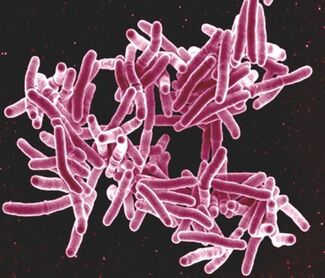Ancient Bacteria and Their Role in Human Evolution and Health
Introduction
The study of ancient bacteria found in archaeological and anthropological contexts has revealed significant insights into human evolution, the microbes that co-evolved with humans, and modern human health. Advances in molecular biology, particularly DNA sequencing and Polymerase Chain Reaction study [2], have enabled researchers to recover and analyze bacterial DNA from ancient human remains, providing valuable information about past diseases, environmental conditions, and microbial evolution. These studies are revolutionizing our understanding of both human and microbial histories, linking evolutionary events to the microbial world.

Bacterial Preservation in Ancient Remains
Ancient bacteria have been discovered in a variety of archaeological sites, including human skeletal remains. These bacteria are often preserved in environments that favor long-term conservation, such as permafrost, dry caves, or sediment layers. The preservation of bacterial DNA in these remains offers an unprecedented opportunity to study the health and microbial life of past populations, as well as the diseases they encountered. This preservation allows scientists to explore microbial communities from millennia ago, opening a window into how ancient humans lived and interacted with their environment.
Sample citations: [1]
[2]
A citation code consists of a hyperlinked reference within "ref" begin and end codes.
For multiple use of the same inline citation or footnote, you can use the named references feature, choosing a name to identify the inline citation, and typing [4]
Second citation of Ref 1: [1]
Here we cite April Murphy's paper on microbiomes of the Kokosing river. [5]
Section 2 Microbiome
Include some current research, with a second image.
Here we cite Murphy's microbiome research again.[5]
Conclusion
You may have a short concluding section.
Overall, cite at least 5 references under References section.
References
<Johnson SC, Hebsgaard MB, Christensen TR, Mikhail Mastepanov, Nielsen R, Munch K, et al. Ancient bacteria show evidence of DNA repair. 2007 Sep 4;104(36):14401–5. “Ancient Bacteria Alive and Well.” Trends in Microbiology, vol. 9, no. 1, Jan. 2001, p. 12, https://doi.org/10.1016/s0966-842x(00)01926-0. Accessed 7 Mar. 2020. “Scientists Find Ancient, Cave-Dwelling Resistant Bacteria | CIDRAP.” Www.cidrap.umn.edu, 12 Dec. 2016, www.cidrap.umn.edu/antimicrobial-stewardship/scientists-find-ancient-cave-dwelling-resistant-bacteria. “Ancient Bacteria Species among the First of Its Kind to Colonise Land.” Www.nhm.ac.uk, www.nhm.ac.uk/discover/news/2023/september/ancient-bacteria-species-among-first-to-colonise-land.html. Benezra, A., et al. “Anthropology of Microbes.” Proceedings of the National Academy of Sciences, vol. 109, no. 17, 28 Mar. 2012, pp. 6378–6381, www.pnas.org/content/109/17/6378, https://doi.org/10.1073/pnas.1200515109. Accessed 10 June 2019. ---. “Anthropology of Microbes.” Proceedings of the National Academy of Sciences, vol. 109, no. 17, 28 Mar. 2012, pp. 6378–6381, www.pnas.org/content/109/17/6378, https://doi.org/10.1073/pnas.1200515109. NIAID. Mycobacterium tuberculosis Bacteria, the Cause of TB [Internet]. Flickr. 2010. Available from: https://www.flickr.com/photos/niaid/5149398656 LIBRARY KKP. Plague bacteria Yersinia pestis, illustration - Stock Image - F030/7501 [Internet]. Science Photo Library. Available from: https://www.sciencephoto.com/media/1121171/view/plague-bacteria-yersinia-pestis-illustration
>
Edited by [Lily Walker], student of Joan Slonczewski for BIOL 116, 2024, Kenyon College.
- ↑ Jump up to: 1.0 1.1 Zigli DD, Brew L, Obeng-Denteh W, Kwofie S. On the Application of Homeomorphism on Amoeba Proteus. Ghana Journal of Technology. 2021 Mar 31;5(2):43-7.
- ↑ Bartlett et al.: Oncolytic viruses as therapeutic cancer vaccines. Molecular Cancer 2013 12:103.
- ↑ Lee G, Low RI, Amsterdam EA, Demaria AN, Huber PW, Mason DT. Hemodynamic effects of morphine and nalbuphine in acute myocardial infarction. Clinica Pharmacology & Therapeutics. 1981 May;29(5):576-81.
- ↑ Jump up to: 4.0 4.1 text of the citation
- ↑ Jump up to: 5.0 5.1 Murphy A, Barich D, Fennessy MS, Slonczewski JL. An Ohio State Scenic River Shows Elevated Antibiotic Resistance Genes, Including Acinetobacter Tetracycline and Macrolide Resistance, Downstream of Wastewater Treatment Plant Effluent. Microbiology Spectrum. 2021 Sep 1;9(2):e00941-21.
